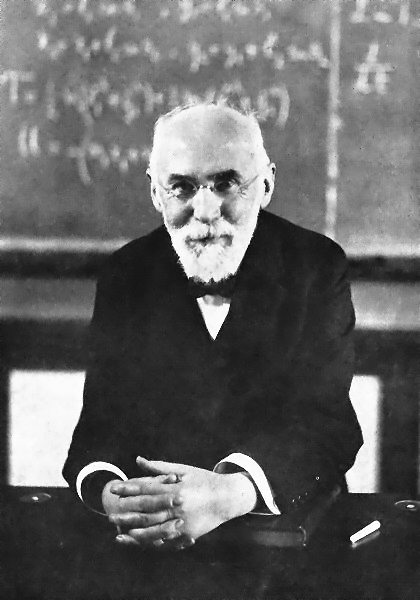Lorentzian Relativity
Let’s review the problem we’ve encountered. Maxwell’s equations imply that the speed of light is approximately 300,000 km/s. This is the speed at which light travels relative to … what? Relative to aether, supposedly. If that is true, then the speed of light should vary in our frame of reference whenever we move through aether. And given that the aether drag hypothesis is wrong, as evidenced by the phenomenon of stellar aberration, we are moving through aether at a significant speed for most (if not all) of the year. Therefore, the speed of light should vary in our frame of reference: light traveling in the direction of Earth’s motion should be slower, in our frame, than light going in a different direction. This variation should have been detected in the Michelson-Morley experiment. But it wasn’t.

1853 - 1928
To account for all of these observations, Dutch physicist Hendrik Lorentz came up with an outlandish hypothesis. When we move through aether, he suggested, our measuring instruments are distorted in a way that makes the flow of aether undetectable!
Aether affects physical objects in two ways, according to Lorentz. First, the lengths of physical objects shrink in the direction of their motion through aether. This distortion, called length contraction, occurs in precisely the amount needed to prevent any measurement of our speed through aether. For example, the Michelson-Morley apparatus seemed to be at rest in the aether, even though it was really moving, because the entire device—including the surface to which the mirrors had been attached—contracted in the direction of its motion through aether. No matter which way the device was rotated, the distances between the mirrors always shrank by precisely the amount needed to prevent the phase shift that would have been observed otherwise.
If the distances between the mirrors actually changed depending on which way Michelson and Morley rotated their device, couldn’t they just measure the distance between the mirrors and see what was going on? Unfortunately, no. According to Lorentz’s hypothesis, all physical objects—including rulers and measuring tapes—shrink in precisely the same way when moving through aether! So it would have appeared as though the mirrors were spaced exactly the same distance apart, even when one mirror was in fact closer than it should have been.
This length contraction hypothesis left a serious problem unsolved, however. According to the aether theory, Maxwell’s equations only hold in the aether’s frame of reference. (Remember, Maxwell’s equations imply that light travels at a certain speed; so if light doesn’t always travel at that speed in Earth’s frame of reference, then Maxwell’s equations aren’t always correct in our frame of reference.) Yet Maxwell’s equations do seem to hold, perfectly, here on Earth.
Lorentz realized that this problem could be solved by supposing that aether also distorts moving objects in a second way. Not only does an object’s length contract in the direction of its motion through aether, but its internal physical processes slow down. In other words, any physical process within the object will occur more slowly than it would if the object weren’t moving through aether. For example, a guitar string vibrates more slowly when the guitar is moving through aether. This “slowing down” effect is called time dilation.
If time dilation really occurs, and guitar strings vibrate more slowly when moving through aether, wouldn’t we notice that the sound has a lower pitch? No, because our brains would slow down too! And we couldn’t use a clock to measure the time dilation either, because the clock would slow down by the same amount. All physical processes on Earth would slow down in exactly the same way, so it would still be impossible to determine whether our planet is moving through the aether.
According to Lorentz’s theory of relativity, the two types of distortions that happen to moving objects—length contraction and time dilation—both occur in precisely the amounts needed to make it appear as though Maxwell’s equations work in all reference frames, even though really the equations only hold in the aether’s frame of reference.
Does this sound like an absurdly improbable coincidence? A crazy conspiracy theory? Albert Einstein thought so too. Although Lorentz’s ideas were crucial to the development of Einstein’s special theory of relativity, as we’ll see, Einstein had an unusual way of looking at things.